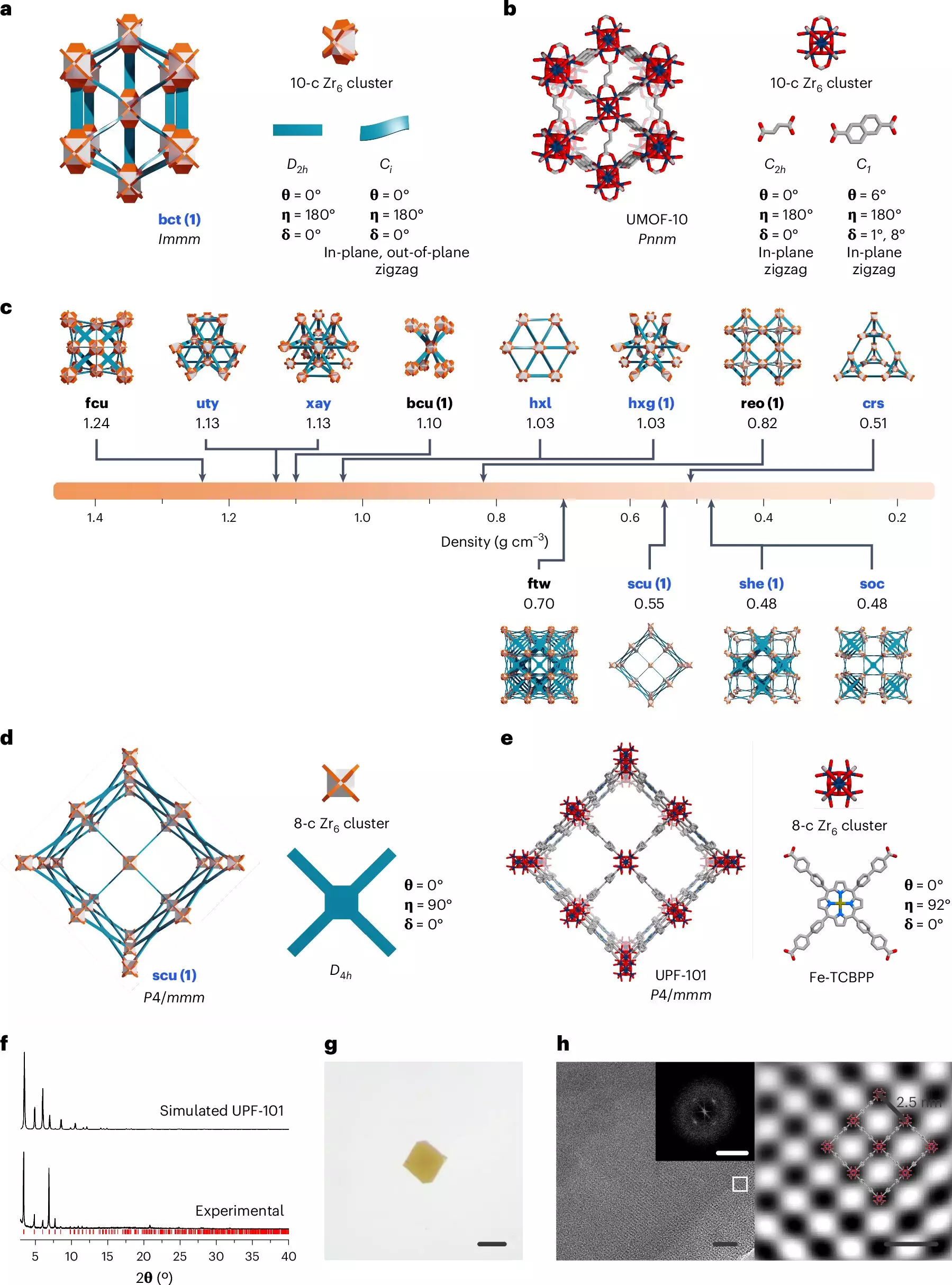Metal-organic frameworks (MOFs) have been a topic of interest in various scientific fields due to their potential applications in carbon dioxide capture, storage, and catalysis. The conventional approach to designing MOFs usually involves either a bottom-up method or a top-down method. However, a recent study published in the journal Nature Synthesis introduces a new strategy called the “Up-Down Approach” that combines these traditional methods to unlock new possibilities in MOF design.
The Up-Down Approach developed by Professor Wonyoung Choe and his team at Ulsan National Institute of Science and Technology in South Korea offers a fresh perspective on MOF creation. By allowing for a wider exploration of structures based on metal clusters before selecting organic ligands, this approach eliminates the constraints imposed by predefined components and structural limitations. This breakthrough paves the way for the discovery of novel MOFs that were previously inaccessible using traditional design methodologies.
The study conducted by Choe’s team resulted in the identification of 26 new zirconium-based MOFs, known for their exceptional chemical stability. Through the successful synthesis of two of these newly discovered structures, the effectiveness of the Up-Down Approach was clearly demonstrated. The use of a “Ribbon Representation” for visualizing organic ligand geometry further improved the precision and efficiency of the MOF design process.
Jiyeon Kim, the lead author of the study, emphasized the significant impact of the Up-Down Approach on material development research. By enabling rapid exploration and development of materials with diverse chemical properties, this innovative strategy enhances the efficiency of MOF design. Co-first author Dongsik Nam highlighted the potential of this research in catalysis, gas storage, and environmental remediation, showcasing the versatility of the newly created MOFs.
Professor Wonyoung Choe underscored the importance of the study in expanding the chemical space of MOFs, thus opening up new possibilities for their application in various fields. The Up-Down Approach represents a major advancement in MOF design, facilitating the discovery of innovative materials with tailored properties. With its ability to push the boundaries of traditional design methods, this strategy holds promise for the continuous evolution of MOF research and applications.


Leave a Reply